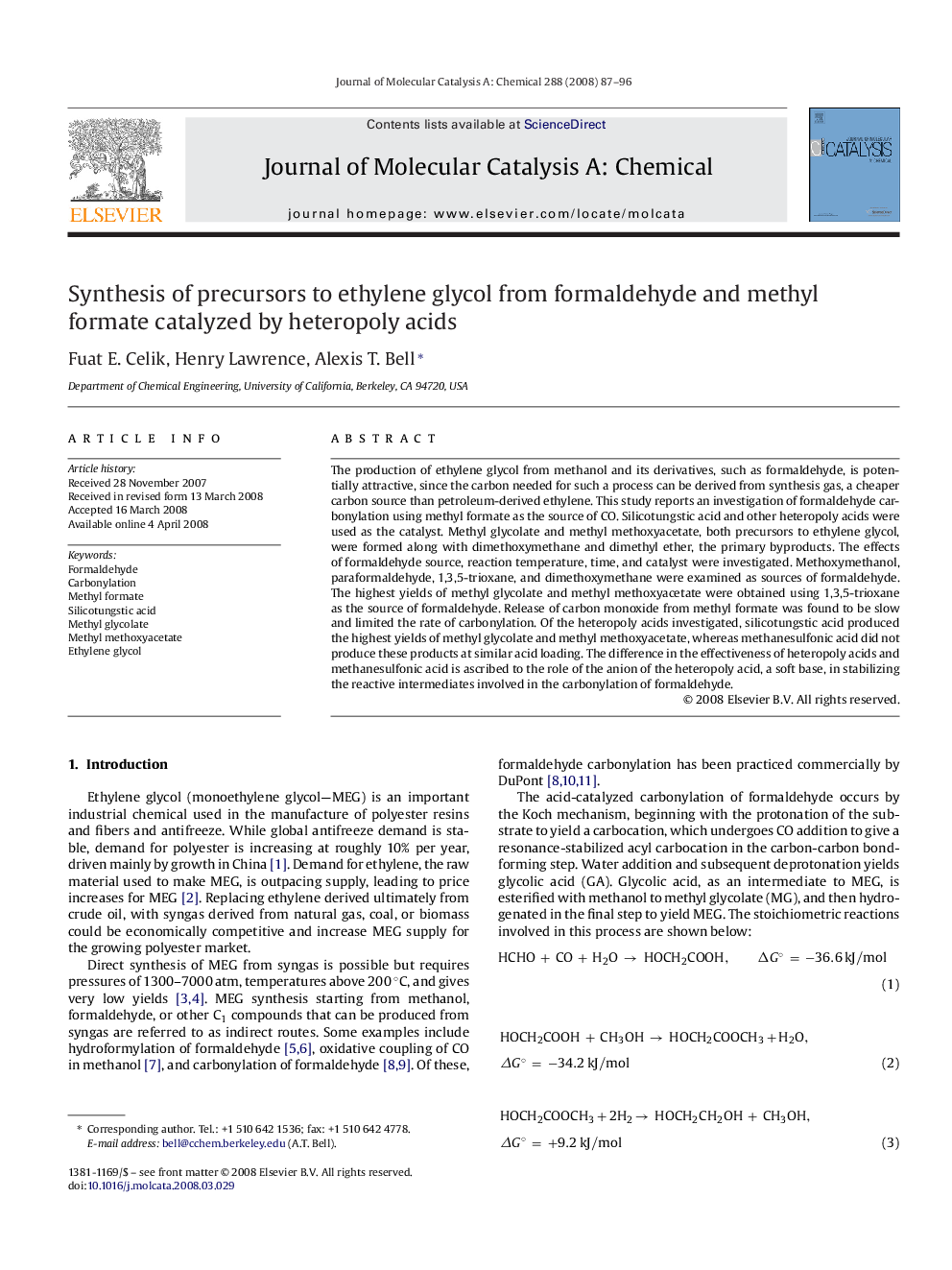| Article ID | Journal | Published Year | Pages | File Type |
|---|---|---|---|---|
| 67278 | Journal of Molecular Catalysis A: Chemical | 2008 | 10 Pages |
The production of ethylene glycol from methanol and its derivatives, such as formaldehyde, is potentially attractive, since the carbon needed for such a process can be derived from synthesis gas, a cheaper carbon source than petroleum-derived ethylene. This study reports an investigation of formaldehyde carbonylation using methyl formate as the source of CO. Silicotungstic acid and other heteropoly acids were used as the catalyst. Methyl glycolate and methyl methoxyacetate, both precursors to ethylene glycol, were formed along with dimethoxymethane and dimethyl ether, the primary byproducts. The effects of formaldehyde source, reaction temperature, time, and catalyst were investigated. Methoxymethanol, paraformaldehyde, 1,3,5-trioxane, and dimethoxymethane were examined as sources of formaldehyde. The highest yields of methyl glycolate and methyl methoxyacetate were obtained using 1,3,5-trioxane as the source of formaldehyde. Release of carbon monoxide from methyl formate was found to be slow and limited the rate of carbonylation. Of the heteropoly acids investigated, silicotungstic acid produced the highest yields of methyl glycolate and methyl methoxyacetate, whereas methanesulfonic acid did not produce these products at similar acid loading. The difference in the effectiveness of heteropoly acids and methanesulfonic acid is ascribed to the role of the anion of the heteropoly acid, a soft base, in stabilizing the reactive intermediates involved in the carbonylation of formaldehyde.
Graphical abstractFormaldehyde derived from different sources was carbonylated catalytically with methyl formate using silicotungstic acid, producing methyl glycolate and methyl methoxyacetate. Release of carbon monoxide from methyl formate was found to be slow, limiting productivity. The reducibility and softness of the Keggin unit, not acid strength, was used to explain the superior activity of silicotungstic acid over other common heteropolyacids and methanesulfonic acid. Figure optionsDownload full-size imageDownload as PowerPoint slide
